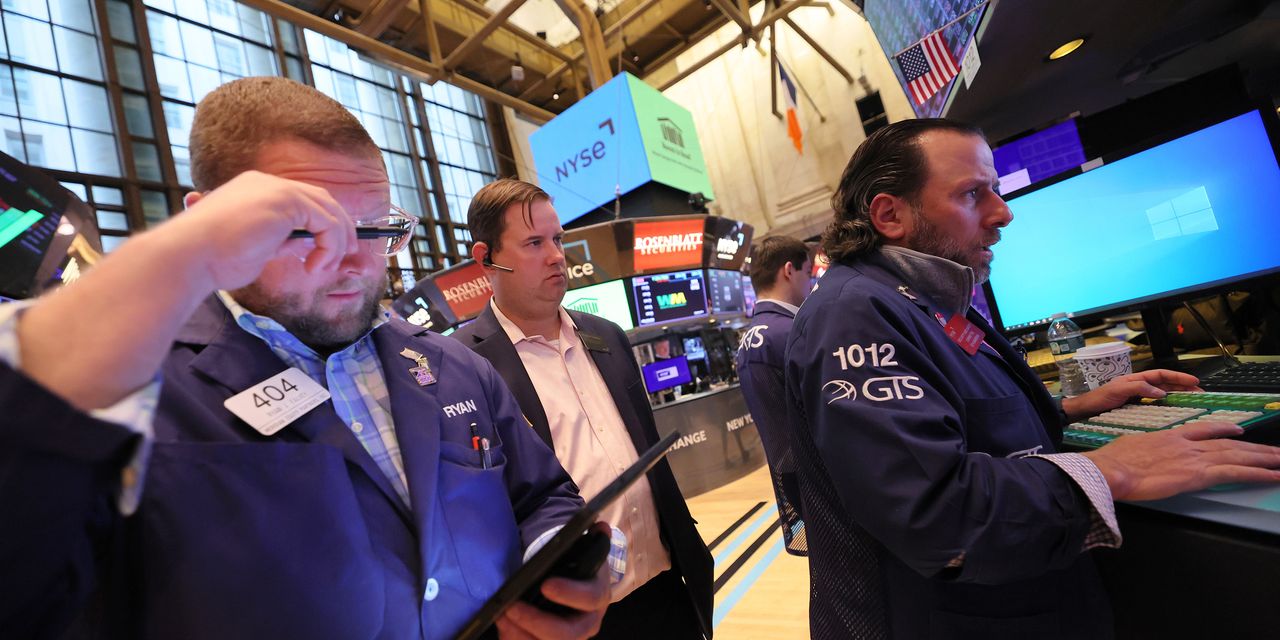It’s been a wonky year for markets so far—but there may be several stocks to play it.
While the Federal Reserve has yet to give a clear signal it will pause interest rate hikes, many investors believe that rates will moderate in 2023 as the central bank works to fight inflation. As a result, stocks have rallied this year, with the S&P 500 up 9% and Big Tech companies generating stellar earnings results all in the face of bank worries and recession fears.
Several fund managers who attended the Morningstar Investment Conference are still looking for bargains—even though many economists such as Bank of America’s Michael Gapen see a case for a mild economic slowdown in 2023. The managers are focused on players in the aerospace industry, given the healthy outlook for travel, and companies with strong pricing power that can weather big swings in consumer demand.
Fidelity Investments portfolio manager Matt Fruhan during a panel on Wednesday said that he’s bullish on U.S. commercial aerospace firms such as
Boeing
(ticker: BA) and General Electric Company (GE). Passenger air traffic is growing and “we are still in the recovery phase of covid,” said Fruhan, who has been investing in the theme for the past 12 months to 18 months.
Demand for air travel in February—as measured by revenue and distances flown—rose 55.5% versus a year ago, according to the latest air traffic report from the International Air Transport Association, which represents some 300 airlines. That figure, however, is still lower than prepandemic levels, matching about 85% of global traffic witnessed in February 2019.
| Company / Ticker | Recent Price | Market Value (bil) | 2024 P/E | Avg P/E (five years) |
|---|---|---|---|---|
| Boeing/BA | $206.78 | $124.40 | 240.3 | 116.5 |
| General Electric Company/GE | 98.97 | 107.80 | 37.2 | 22.7 |
| Safran/SAFRY (ADR) | 38.87 | 66.33 | 25.8 | 24.2 |
| Estée Lauder Companies/EL | 246.72 | 88.13 | 36 | 35.1 |
| LVMH Moet Hennessy Louis Vuitton/LVMUY (ADR) | 191.99 | 481.8 | 25.6 | 26 |
| Lululemon Athletica/LULU | 379.93 | 50.26 | 31.6 | 40.5 |
| Shiseido Company/SSDOY (ADR) | 50.3 | 19.95 | 55.9 | 47.4 |
FactSet
Besides the U.S. names, Fruhan also likes French aerospace supplier
Safran
(SAF.France). It’s an engine manufacturer that also sells units like seats and lavatories and offers repair services, adding a recurring revenue stream.
Nate Velarde, co-portfolio manager of the Chautauqua International Growth Fund, bought
Safran
shares in 2022. He sees the proliferation of low-cost airlines as a tailwind—and is impressed by the company’s successive price increases in its spare parts business in 2021 and about 10% in November last year.
“Given the broad environment we are faced in, you need to find companies that have the ability to protect margins [through] pricing power,” Velarde told Barron’s at the conference.
Spencer Adair, a portfolio manager and partner at Baillie Gifford, says luxury cosmetic brand stocks are the best examples of pricing power, given makeup stands as “absolutely critical” in any macro environment.
One of his favorites:
Estée Lauder (EL), which was a Barron’s pick last year. Shares are down 0.6% so far this year: Results for the December ended quarter showed prolonged Covid-19 lockdowns affected foot traffic at bricks-and-mortar stores in China. However, Adair expects these headwinds to abate, as China’s reopening gathers steam and
Estée Lauder
accelerates its direct to consumers sales.
Adair, who manages the nearly $300 billion investment firm, also likes Japanese skincare brand
Shiseido
(SSDOY), which reported a 6% drop in its China business last year. Adair cited demand from Chinese travelers, who are known for their interest in multi-step skincare regimens, as a tailwind.
Natasha Kuhlkin, a large-cap growth equity portfolio manager at Jennison Associates, sees strength in global luxury consumer brands. While sitting on a panel about the disruption of growth stocks with Adair and Fruhan, Kuhlkin named LVMH Moët Hennessey Louis Vuitton (LVMUY) and athleisure brand
Lululemon Athletica
(LULU). “There’s a controlled supply” of these companies, she said, adding that they “are starting to appeal to more consumers.”
Lululemon trades at 31.6 times forward earnings, lower than its 40.5 times five-year average.
LVMH,
meanwhile, is trading at 25.6 times nearly matching its average five-year price-to-earnings ratio.
Ultimately, it’s all about customer demand and how far can people stretch their frugality. Switching to a cheaper laundry detergent may work for some, but quitting on their go-to-gym leggings might be asking too much—giving companies with pricing power a leg up.
Write to Karishma Vanjani at [email protected].
Read the full article here


